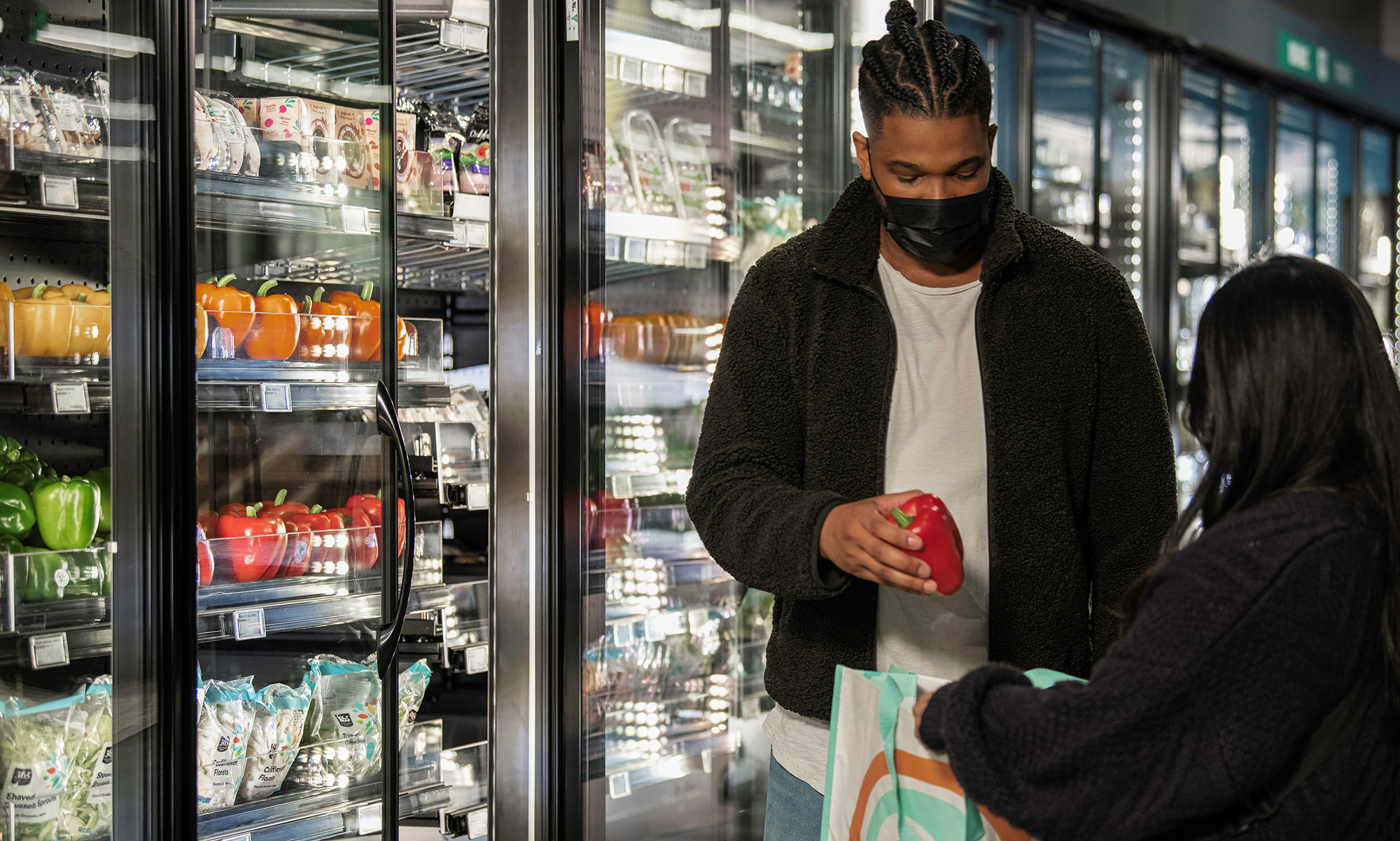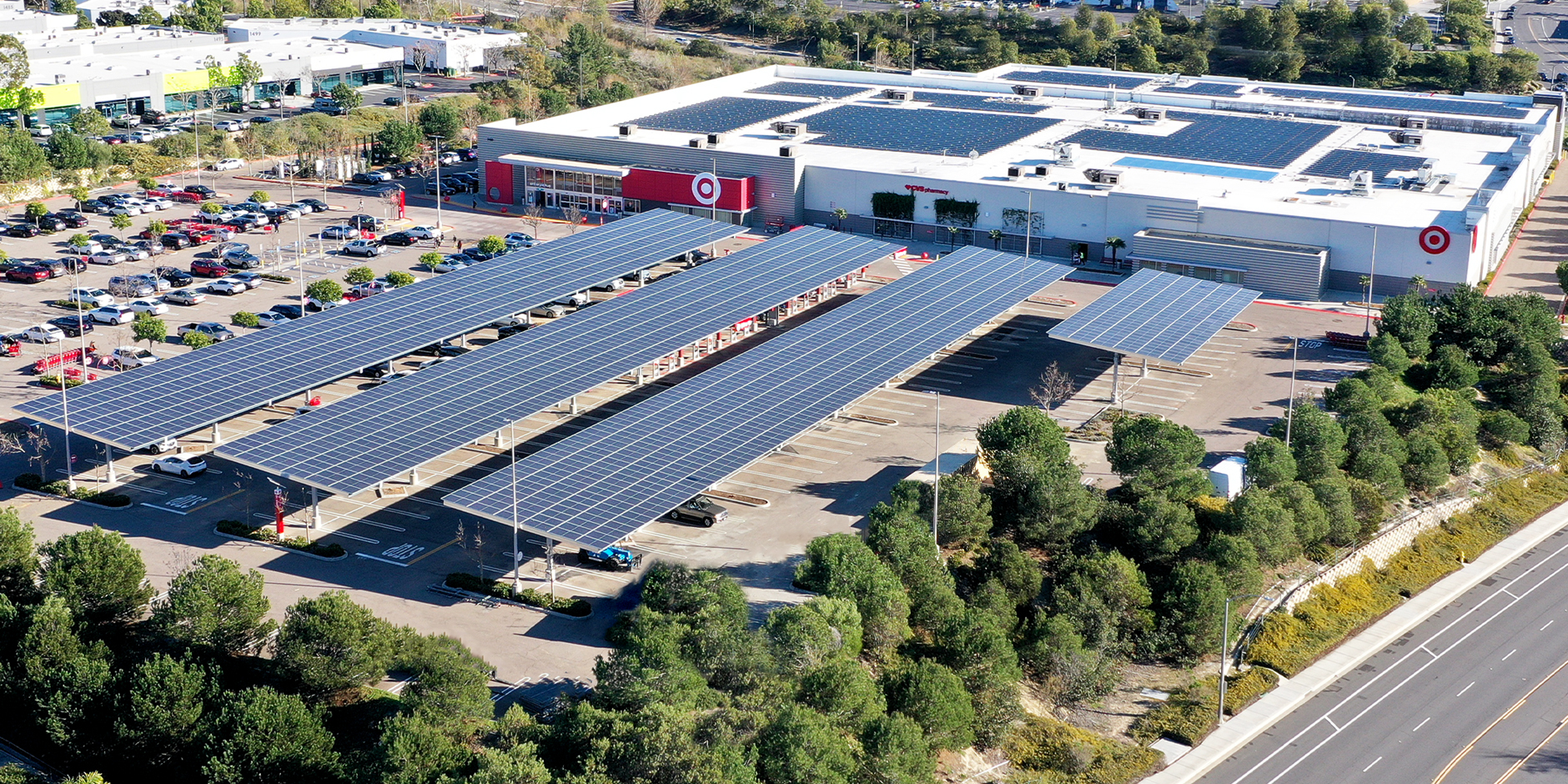Two of the nation’s leading retailers — Amazon and Target Corp. — announced on Thursday that they are seeking net zero certification from the International Living Future Institute for two of their store locations as they continue to take steps to meet their sustainability goals.
The International Living Future Institute (ILFI) is a leading nonprofit dedicated to advancing sustainable building practices. ILFI-certified buildings must be energy-efficient, have all electricity provided by renewable energy, demonstrate a reduction in the embodied carbon of building materials, and prove that all carbon emissions associated with the manufacturing and construction process have been neutralized. To receive certification, ILFI will review 12 consecutive months of performance data to ensure the new store meets this standard.
Amazon is seeking net-zero carbon certification for its newest Amazon Fresh store in Seattle, which makes it the world’s first grocery store to pursue the ILFI Zero Carbon certification. More than a dozen upgrades and features have been incorporated throughout the design and development of the 35,000-square-foot store, including transitioning to a CO2-based refrigeration system, which reduces greenhouse gas emissions by 38 metric tons per year compared to a conventional system.

The new Amazon Fresh store uses a CO2-based refrigeration system, which reduces greenhouse gas emissions by 38 metric tons per year compared to a conventional system.
The store also uses steel byproducts in the concrete floor to reduce the embodied carbon — the carbon associated with the manufacturing and installation of the flooring — by nearly 40% compared to a standard concrete floor. Another critical change is the fully electric kitchen space, where store teams prepare fresh food, that reduces the need for fossil fuel combustion in the store. Amazon is also electrifying the store using 100% renewable electricity sourced from Amazon’s renewable energy projects, which helps the company continue its progress to power Amazon operations with 100% renewable energy by 2025.
“We are constantly thinking about what we can do to make the customer shopping experience easier, more seamless, and more sustainable,” said Stephenie Landry, vice president of Amazon Grocery. “We know many customers are prioritizing sustainability in what products they buy and where they choose to shop. With our newest Amazon Fresh store, we are taking the next step on our path to becoming a net-zero carbon business by 2040, and we welcome customers to experience this firsthand while shopping with us in this store.”
Some upgrades will be used at all Amazon Fresh grocery stores moving forward, such as added doors on refrigeration cases and lower-carbon concrete flooring, which will help to reduce overall energy consumption and reduce our embodied carbon.
The new sustainable store is part of Amazon’s commitment to The Climate Pledge, which aims to make the company net-zero carbon across its business by 2040, 10 years ahead of the Paris Agreement.
“In order to deliver on our commitments to the Climate Pledge, we must work together across all areas of our business to develop solutions to decarbonize,” said Kara Hurst, vice president of Worldwide Sustainability at Amazon. “It’s meaningful progress to open our latest Amazon Fresh Store seeking net-zero carbon certification, and I’m proud of the innovation and technology that the store offers to customers and employees, and for the environment.”

The Target store in Vista, Calif., will generate renewable energy through 3,420 solar panels across its roof and newly installed carport canopies.
Target’s goals on target
Also on Thursday, Target announced its most sustainable store to date, as the retailer's Vista, Calif., site will generate more renewable energy than it needs annually to operate and will test multiple innovations to reduce the building’s emissions. The store’s retrofit and new features will inform Target’s investments in new stores and remodel programs that support its long-term growth and help guide the retailer’s efforts to achieve its sustainability goals. Target has also applied for net zero energy certification from ILFI.
The store will generate renewable energy through 3,420 solar panels across its roof and newly installed carport canopies. The site is expected to produce up to a 10% energy surplus each year that it can transmit back to the local power grid, and he building also features elements to further reduce emissions, such as powering its HVAC heating through rooftop solar panels, instead of natural gas. Additionally, the store switched to CO2 refrigeration, a natural refrigerant, that Target will scale chain-wide by 2040 to reduce its direct operations’ emissions by 20%.
“We’ve been working for years at Target to shift toward sourcing more renewable energy and further reducing our carbon footprint, and our Vista store’s retrofit is the next step in our sustainability journey and a glimpse of the future we’re working toward,” said John Conlin, senior vice president of properties, Target. “Our new stores and remodel programs are designed to help achieve our sustainability goals as we test, learn and scale our innovations over time across our operations.”
Target has committed to achieve net zero greenhouse gas emissions enterprise-wide by 2040, and since 2017 Target has already reduced its direct operations’ emissions by nearly 27%. One of the ways it intends to reach its net zero goal is through sourcing 100% of its electricity from renewable sources for its operations by 2030.





